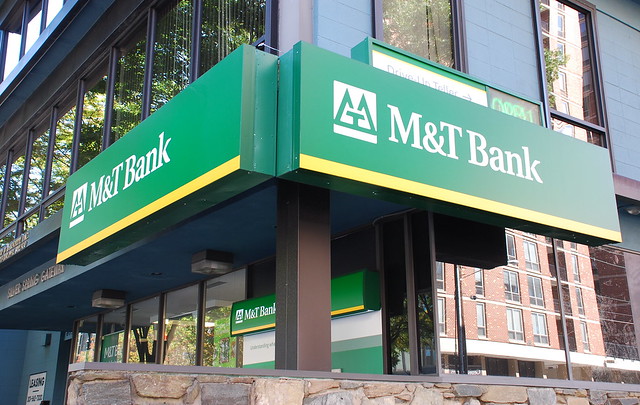 |
| M&T Bank in Downtown Silver Spring Image Courtesy of Adam Fagen |
Montgomery County, MD probably utilizes more new urbanist, smart growth principles in development planning than pretty much every other jurisdiction in the DC Metro region (outside of Washington D.C. itself), and more so than most suburban counties in the nation. However, while new walkable, transit-oriented urban centers in the county have been rapidly growing over the past decade or so with the construction of new high-density, mixed-use development built along these principles, it seems that one type of business has stubbornly resisted the urban transformation: bank branches.
The typical template for mixed-use development in Montgomery County's urban centers comprises either residential units or commercial office space (relatively rare in these days of high vacancy rates across the Metro area and limited government and business expansion) above ground-floor retail in mid- or high-rise buildings. When I use the term "retail" I'm encompassing a wide range of businesses such as: restaurants, nightclubs, barbers, supermarkets, pharmacies, bars, bank branches, etc. The combination of uses in these mixed-use developments is crucial to creating a true urban environment where residents can live, work, shop, and play, and the streets are active from dawn well into the night.
For some reason, banks (in Montgomery County's urban areas) have shied away from this type of development, while pretty much every other form of "retail" has embraced it. There are a number of new bank branches popping up in the county's urban areas, but many as traditional stand-alone single-story buildings with parking, rather than on the ground-floor of multi-story buildings. Some of these locations are pretty high-profile and on very valuable plots of land.


